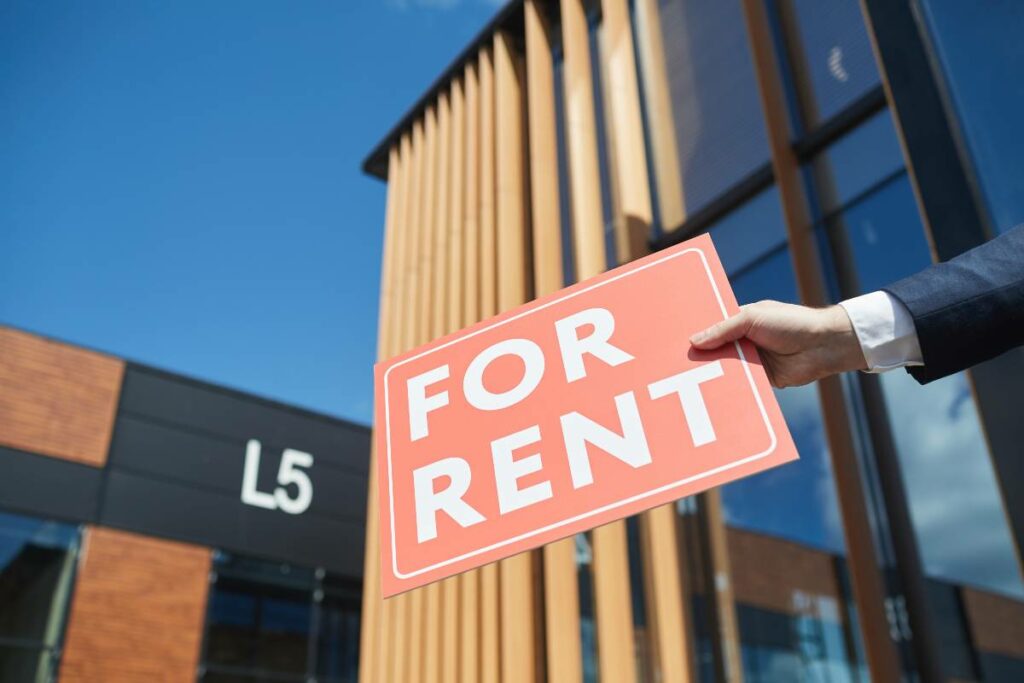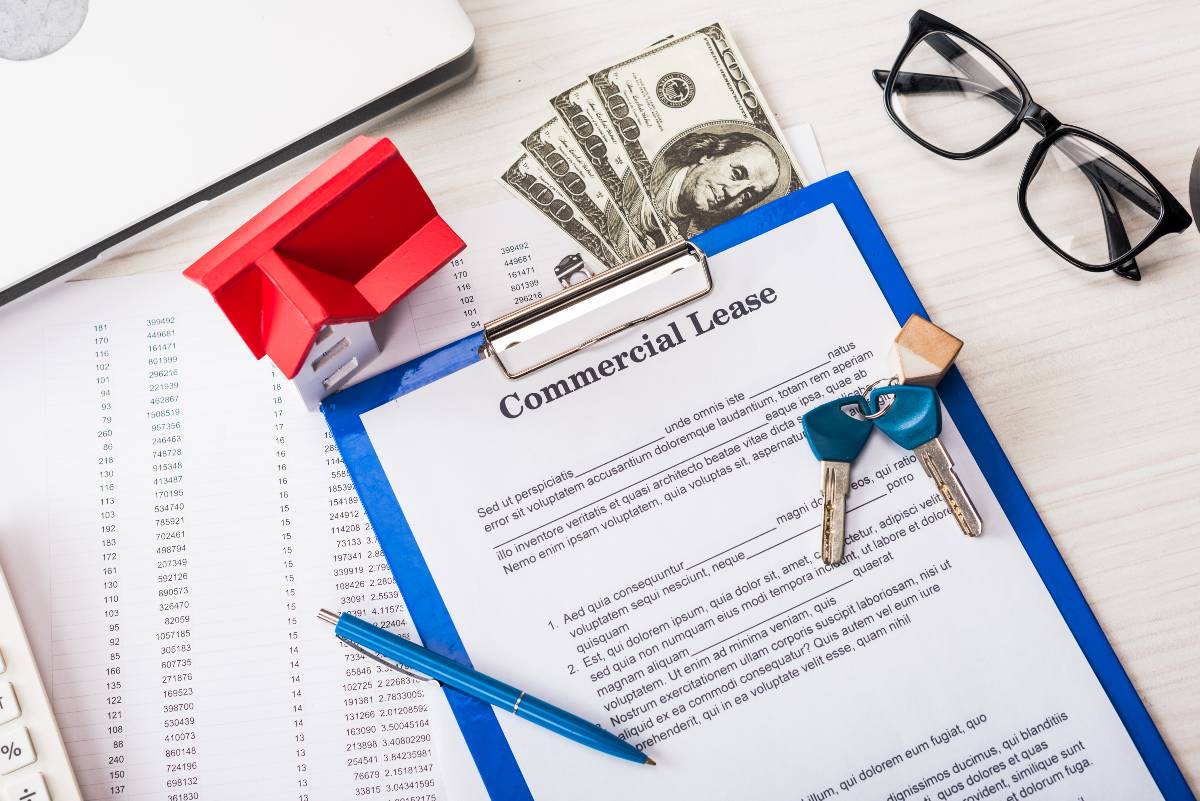In the world of rental properties, setting the right price can make or break your business. As a seasoned professional in the commercial real estate industry, I’ve seen firsthand how a well-crafted pricing strategy can lead to increased profitability and customer satisfaction. In this article, we’ll dive deep into the art and science of rental pricing, exploring various strategies and techniques that can help you maximize your returns while keeping your tenants happy. Whether you’re a seasoned landlord or just starting, this comprehensive guide will provide you with the insights and tools you need to succeed in the competitive world of rental properties. So, grab a cup of coffee, sit back, and let’s embark on this exciting journey together!
Key Takeaways
- Understanding your costs and the rental market is crucial for developing an effective pricing strategy
- Implement a mix of pricing strategies, such as cost-plus margin, competitive pricing, and flexible pricing, to optimize profitability
- Continuously monitor and adjust your pricing strategy based on market conditions and customer feedback
Table of Contents
Understanding the Rental Market
Before you can develop an effective pricing strategy, you need to have a deep understanding of the rental market. This involves:
- Analyzing market trends and demand patterns: Keep a close eye on the latest trends in your local market, such as changes in rental rates, occupancy levels, and tenant preferences. This will help you stay ahead of the curve and adjust your pricing accordingly. For example, according to Zillow’s rental report for March 2024, asking rents increased 3.6% in March 2024 compared to the same time last year, indicating a growing demand for rental properties.
Identifying target markets and customer segments: Not all tenants are created equal. By identifying your ideal tenant profile, you can tailor your pricing and marketing efforts to attract the right people to your properties.
Conducting competitor analysis: Take a close look at what your competitors are doing in terms of pricing, amenities, and marketing. This will give you a better idea of where you stand in the market and how you can differentiate yourself.
Assessing local market conditions and regulations: Every market is different, and it’s essential to understand the unique challenges and opportunities in your area. This includes local zoning laws, rent control regulations, and economic conditions.
By taking the time to thoroughly analyze the rental market, you’ll be in a much better position to develop a pricing strategy that works for your business.
Determining Your Costs
Before you can set your rental prices, you need to have a clear understanding of your costs. This includes:
Purchase prices and depreciation: If you’ve recently purchased a rental property, you’ll need to factor in the purchase price and any associated costs, such as closing fees and renovations. You’ll also need to consider the depreciation of the property over time.
Maintenance, shipping, and delivery costs: Keeping your rental properties in top condition requires ongoing maintenance and repairs. You’ll also need to factor in any costs of shipping or delivering equipment or supplies.
Overheads and miscellaneous expenses: Running a rental business involves various overhead costs, such as insurance, utilities, and property management fees. Make sure to account for these expenses when setting your prices.
Break-even point calculation: To ensure that your rental business is profitable, you need to know your break-even point. This is the point at which your total revenue equals your total costs. By calculating your break-even point, you can set your prices accordingly and ensure that you’re generating a profit.
Factoring in equipment lifecycle and replacement costs: If you’re renting out equipment or furniture, you’ll need to consider the lifecycle of these items and factor in replacement costs. This will help you determine how much you need to charge to cover these expenses over time.
| Cost Category | Example Expenses |
|---|---|
| Purchase Price & Depreciation | Down payment, closing costs, renovation expenses, depreciation |
| Maintenance & Repairs | Landscaping, cleaning, plumbing, electrical, HVAC |
| Overheads & Miscellaneous | Insurance, utilities, property management fees, marketing expenses |
| Equipment Lifecycle & Replacement | Furniture, appliances, electronics, tools |
By thoroughly understanding your costs, you can develop a pricing strategy that ensures the long-term profitability of your rental business.
Pricing Strategies
Now that you have a solid understanding of your costs and the rental market, it’s time to explore different pricing strategies. Here are some of the most effective approaches:
Cost-plus margin approach
The cost-plus margin approach involves setting your rental prices based on your costs plus a predetermined profit margin. Here’s how it works:
Advantages:
- Ensures that you’re covering your costs and generating a profit
- Provides a clear and transparent pricing structure
- Allows for easy adjustments based on changes in costs
Disadvantages:
- May not be competitive in the market
- Does not take into account market demand or competitor pricing
To implement a cost-plus margin approach effectively, start by calculating your total costs and then add a profit margin that aligns with your business goals. Make sure to review and adjust your prices regularly based on changes in your costs or market conditions.
Competitive Pricing
Competitive pricing involves setting your rental prices based on what your competitors are charging. Here’s what you need to know:
Assessing competitors’ pricing: Conduct thorough research on your competitors’ pricing strategies, including their rental rates, fees, and promotions. This will give you a better idea of where you stand in the market.
Positioning your rental business: Based on your competitor analysis, determine how you want to position your business in the market. Do you want to be the low-cost provider, or do you want to offer premium services at a higher price point?
Flexible pricing (per hour or day)
Flexible pricing involves charging different rates based on the duration of the rental period. This can be an effective strategy for short-term rentals or equipment rentals. Here are some benefits:
Encourages longer rentals: By offering lower rates for longer rental periods, you can encourage tenants to rent for extended periods, which can lead to increased revenue and occupancy rates.
Ideal for short-term rentals: Flexible pricing is particularly well-suited for short-term rentals, such as vacation rentals or event spaces, where demand can vary significantly based on the season or day of the week.
Fixed pricing (per week or month)
Fixed pricing involves charging a set rate for a specific rental period, such as a week or a month. This can be an effective strategy for long-term rentals or properties in high-demand areas. Here are some advantages:
Predictable revenue: With fixed pricing, you can easily predict your revenue for a given period, which can help with budgeting and financial planning.
Attracts long-term tenants: Fixed pricing can be attractive to tenants who are looking for a stable and predictable living arrangement, which can lead to lower turnover rates and increased occupancy.
Psychological pricing techniques
Psychological pricing involves using specific pricing techniques to influence consumer behavior and perception. Here are two common techniques:
Charm pricing: This involves setting prices that end in odd numbers, such as $99 or $495, to make the price seem more attractive and affordable to potential tenants.
Perceived value pricing: This involves setting prices based on the perceived value of the rental property or service, rather than just the costs. By highlighting unique features or benefits, you can justify a higher price point and attract tenants who are willing to pay for quality.

Optimizing Your Pricing
Once you’ve established your pricing strategy, it’s important to continuously monitor and optimize your approach based on market conditions and customer feedback. Here are some tips:
Adapting pricing based on seasonality and demand
Rental demand can vary significantly based on the season or time of year. For example, vacation rentals may be in high demand during the summer months, while student housing may be more popular during the academic year. By adjusting your prices based on these fluctuations in demand, you can maximize your revenue and occupancy rates.
Offering discounts, promotions, and bundles
Offering discounts, promotions, and bundles can be an effective way to attract new tenants and encourage longer rental periods. For example, you could offer a discount for tenants who sign a long-term lease or bundle multiple services together at a reduced rate.
When offering discounts or promotions, it’s important to carefully consider the impact on your bottom line. Make sure that any discounts or promotions are sustainable and aligned with your overall business goals.
Upselling and value-added services
Upselling involves offering additional services or upgrades to your tenants at an additional cost. This can be an effective way to increase your revenue and provide more value to your tenants. Some examples of upselling opportunities include:
- Offering furniture rental packages
- Providing cleaning or maintenance services
- Offering parking or storage options
By providing value-added services, you can differentiate yourself from competitors and attract tenants who are willing to pay for convenience and quality.
Continuously monitoring and adjusting prices
To ensure that your pricing strategy remains effective over time, it’s important to continuously monitor your performance and adjust your prices as needed. This involves:
- Tracking key metrics such as occupancy rates, revenue, and customer satisfaction
- Regularly conducting market research to stay up-to-date on competitor pricing and market trends
- Seeking feedback from tenants and adjusting your approach based on their needs and preferences
Implementing dynamic pricing strategies
Dynamic pricing involves adjusting your prices in real time based on various factors such as supply and demand, competitor pricing, and market conditions. By using dynamic pricing software or algorithms, you can automatically optimize your prices to maximize your revenue and occupancy rates.
While dynamic pricing can be an effective strategy, it’s important to use it carefully and transparently. Make sure to clearly communicate any price changes to your tenants and provide them with the necessary context and rationale.
Pricing for Long-Term Profitability
While it can be tempting to focus on short-term gains when setting your rental prices, it’s important to consider the long-term profitability of your business. Here are some strategies to keep in mind:
Balancing short-term gains and long-term objectives
When setting your prices, it’s important to strike a balance between maximizing short-term revenue and achieving your long-term business objectives. For example, setting prices too high may lead to short-term profits but could also result in higher vacancy rates and lower long-term revenue.
To balance these competing priorities, consider factors such as:
- The longevity and loyalty of your tenants
- The overall health and sustainability of your rental market
- Your ability to maintain and improve your rental properties over time
Fostering customer loyalty through fair pricing
One of the keys to long-term profitability in the rental industry is building strong relationships with your tenants. By offering fair and transparent pricing, you can foster a sense of trust and loyalty among your tenants, which can lead to higher retention rates and positive word-of-mouth referrals.
Some strategies for fostering customer loyalty through pricing include:
- Offering discounts or incentives for long-term tenants
- Providing clear and transparent communication about any price changes or fees
- Being responsive to tenant feedback and concerns about pricing
Considering the lifetime value of a customer
When setting your rental prices, it’s important to consider the lifetime value of a customer, rather than just the short-term revenue they generate. By building strong relationships with your tenants and providing excellent service over time, you can increase the likelihood that they will continue to rent from you for years to come.
To calculate the lifetime value of a customer, consider factors such as:
- The average length of a tenant’s stay
- The total revenue generated by a tenant over their lifetime
- The cost of acquiring and retaining tenants
By focusing on the lifetime value of your customers, you can make more informed decisions about pricing and invest in strategies that will drive long-term success.
Implementing Your Pricing Strategy
Once you’ve developed your pricing strategy, it’s important to implement it effectively and consistently across your rental business. Here are some key steps to keep in mind:
Communicating pricing expectations to customers
To avoid confusion or misunderstandings, it’s important to clearly communicate your pricing expectations to potential tenants from the outset. This includes:
- Providing detailed information about rental rates, fees, and any additional costs
- Explaining any pricing tiers or options available
- Outlining any policies or procedures related to payment, such as late fees or security deposits
By setting clear expectations upfront, you can avoid disputes or misunderstandings down the line and build trust with your tenants.
Training staff on pricing policies
If you have staff members who interact with tenants or handle pricing and payments, it’s important to provide them with thorough training on your pricing policies and procedures. This includes:
- Educating staff on your pricing strategy and rationale
- Providing guidance on how to communicate pricing information to tenants
- Training staff on how to handle payment issues or disputes
By ensuring that your staff is well-versed in your pricing policies, you can provide a consistent and professional experience for your tenants.
Utilizing rental management software for efficient pricing
To streamline your pricing processes and ensure accuracy and consistency, consider investing in rental management software. This type of software can help you:
- Automate pricing calculations and adjustments based on market conditions or other factors
- Generate pricing reports and analytics to help you make data-driven decisions
- Integrate with other systems such as payment processing or accounting software
By leveraging technology to manage your pricing, you can save time and reduce the risk of errors or inconsistencies.
Measuring the success of your pricing strategy
To determine whether your pricing strategy is effective, it’s important to regularly measure and analyze your performance. This includes tracking metrics such as:
- Occupancy rates and vacancy rates
- Revenue per unit or property
- Customer satisfaction and retention rates
By monitoring these metrics over time, you can identify areas for improvement and make data-driven decisions about pricing adjustments or strategy changes.
Regularly reviewing and updating pricing strategies
Finally, it’s important to recognize that pricing is not a one-time decision, but an ongoing process that requires regular review and adjustment. As market conditions, competitor strategies, and customer preferences evolve, you may need to adapt your pricing approach to stay competitive and profitable.
Some strategies for regularly reviewing and updating your pricing include:
- Conducting periodic market research and competitor analysis
- Seeking feedback from tenants and staff on pricing perceptions and experiences
- Analyzing performance data and identifying trends or opportunities for improvement
By staying proactive and adaptable in your pricing strategy, you can position your rental business for long-term success.

Case Studies and Real-World Examples
To illustrate the effectiveness of different rental pricing strategies, let’s take a look at some real-world examples and case studies.
Successful implementation of rental pricing strategies
One example of a successful rental pricing strategy is the approach taken by Airbnb, the popular short-term rental platform. Airbnb uses a dynamic pricing algorithm that automatically adjusts rental rates based on factors such as supply and demand, seasonality, and local events. By leveraging data and technology to optimize pricing in real-time, Airbnb has been able to maximize revenue for its hosts while also providing competitive rates for guests.
Another example is the pricing strategy used by WeWork, the coworking space provider. WeWork offers a variety of pricing options to meet the needs of different types of customers, from freelancers to large enterprises. By providing flexible pricing plans and bundling services such as office amenities and networking events, WeWork has been able to attract and retain a diverse customer base.
Lessons learned from rental businesses’ pricing experiences
Of course, not all rental pricing strategies are successful. One cautionary tale is the experience of movie rental company Blockbuster, which struggled to adapt to changing market conditions and consumer preferences. By maintaining a rigid pricing model focused on late fees and penalties, Blockbuster failed to compete with more flexible and customer-friendly options such as Netflix and Redbox.
The lesson here is that pricing strategies need to be adaptable and responsive to changing market conditions and customer needs. By staying attuned to these factors and being willing to pivot when necessary, rental businesses can avoid the fate of companies like Blockbuster and position themselves for long-term success.
FAQs
What factors should I consider when setting the rental price for my commercial properties?
When setting the rental price for your commercial properties, it is essential to consider market research, your competitors’ pricing, the rental market conditions, the amenities and features of your property, and your business goals. By analyzing these factors, you can strategically price your rental to maximize profitability.
How can I use a rental pricing strategy to maximize my rental income?
To maximize your rental income, you can employ a rental pricing strategy that takes into account the demand in the market, positions your rental competitively, and ensures you are charging the right rental rate based on the value of your property. Utilizing a strategic approach to pricing can help you achieve higher rental rates and increase your profit margin.
What are some pricing strategies for rental that I can implement to stay competitive?
Some pricing strategies for rental that you can implement include competitive pricing, psychological pricing strategy, and different types of equipment rental pricing. By understanding the needs of your target market and analyzing your competitors’ pricing, you can adjust your rental rates to attract tenants and stand out in the market.
How can I effectively price my rental to minimize vacancies and attract tenants?
To effectively price your rental, you can conduct thorough market research, assess the demand for properties in your area, and offer competitive rates compared to your competitors. Additionally, positioning your rental as a desirable option with the right amenities and features can help minimize vacancies and attract quality tenants.
What role does rental management play in determining the rental pricing strategy?
Rental management plays a crucial role in determining the rental pricing strategy by overseeing the turnover of properties, maintaining a high standard of property management, and ensuring that the rental rates align with the market conditions. Effective rental management can help you make informed decisions when pricing your commercial real
Conclusion
In conclusion, developing an effective rental pricing strategy is essential for maximizing profitability and building long-term success in the rental industry. By understanding your costs, analyzing market conditions, and implementing a mix of pricing approaches, you can attract and retain tenants while also achieving your business goals.
Remember, pricing is an ongoing process that requires regular review and adaptation. By staying attuned to market trends, customer feedback, and performance data, you can continually optimize your pricing strategy and position your rental business for success.
As a seasoned professional in the commercial real estate industry, I’m passionate about helping landlords and business owners achieve their goals through effective pricing strategies. If you’re looking for guidance or support in developing your rental pricing approach, I encourage you to reach out and schedule a consultation. Together, we can develop a customized strategy that meets your unique needs and helps you achieve your full potential in the rental market.




